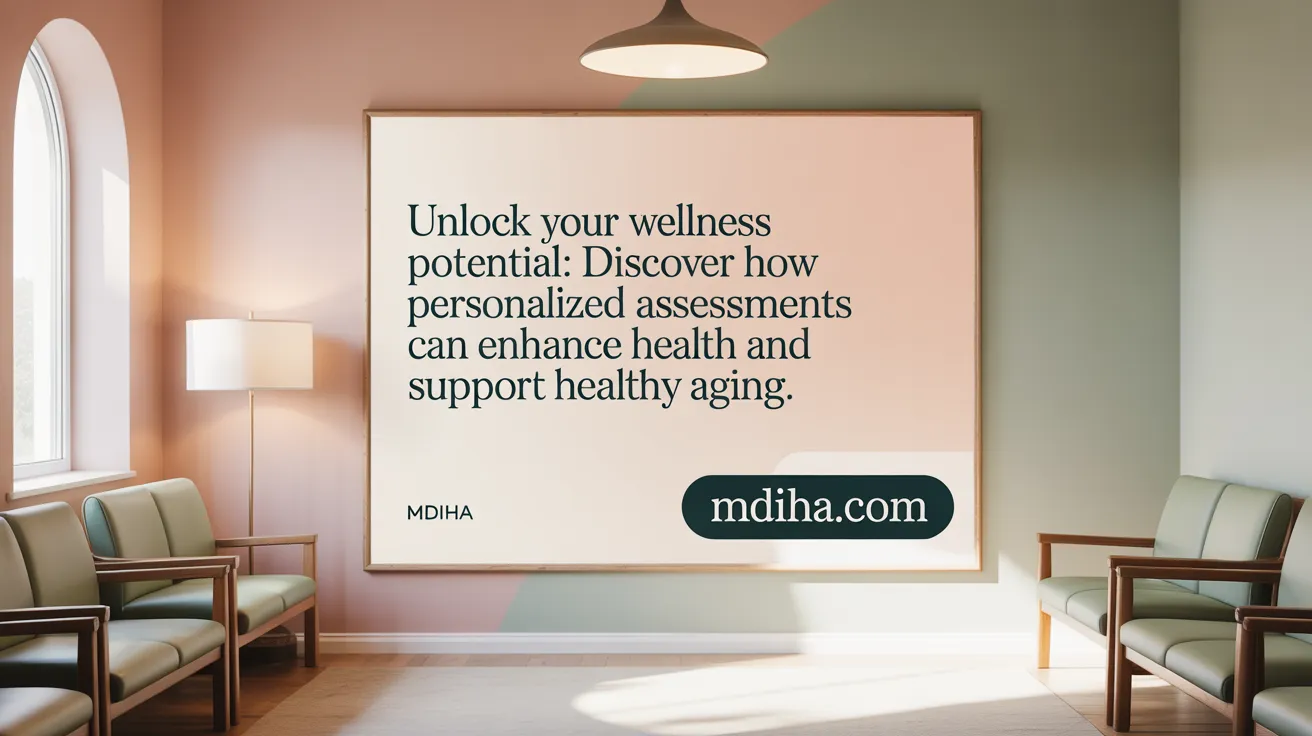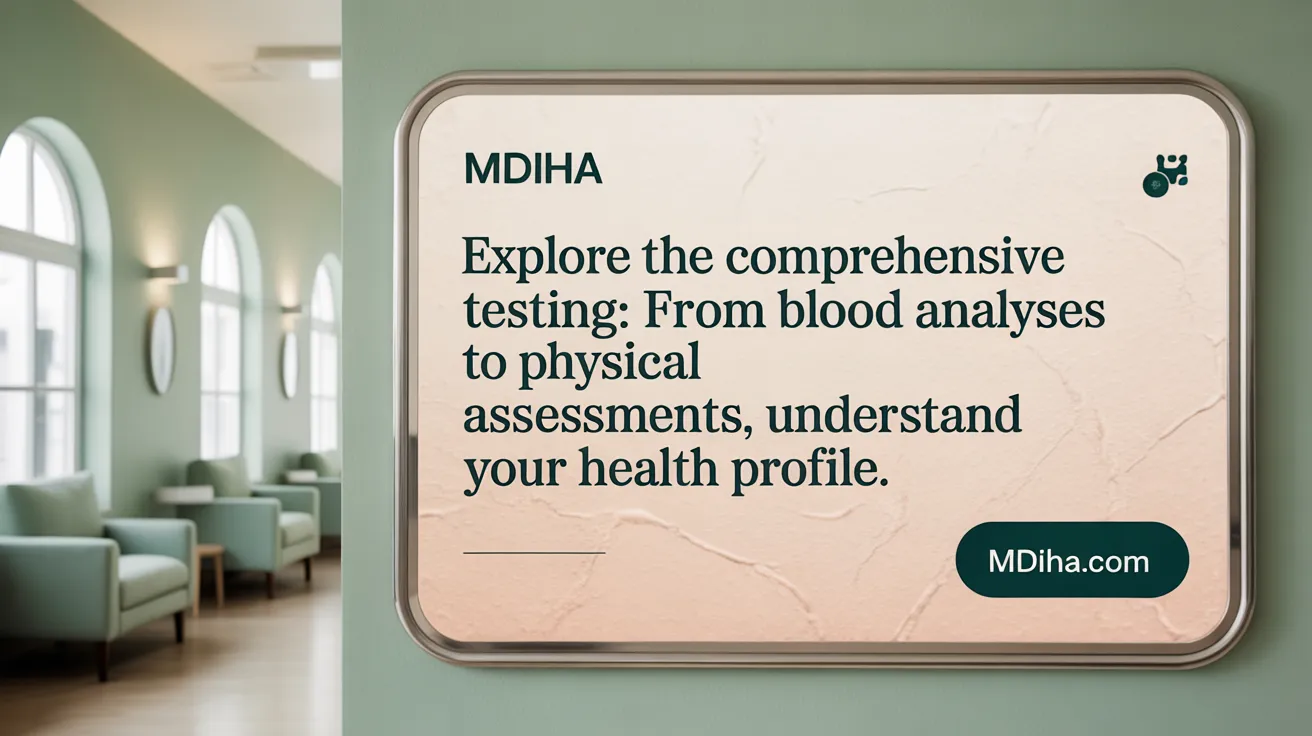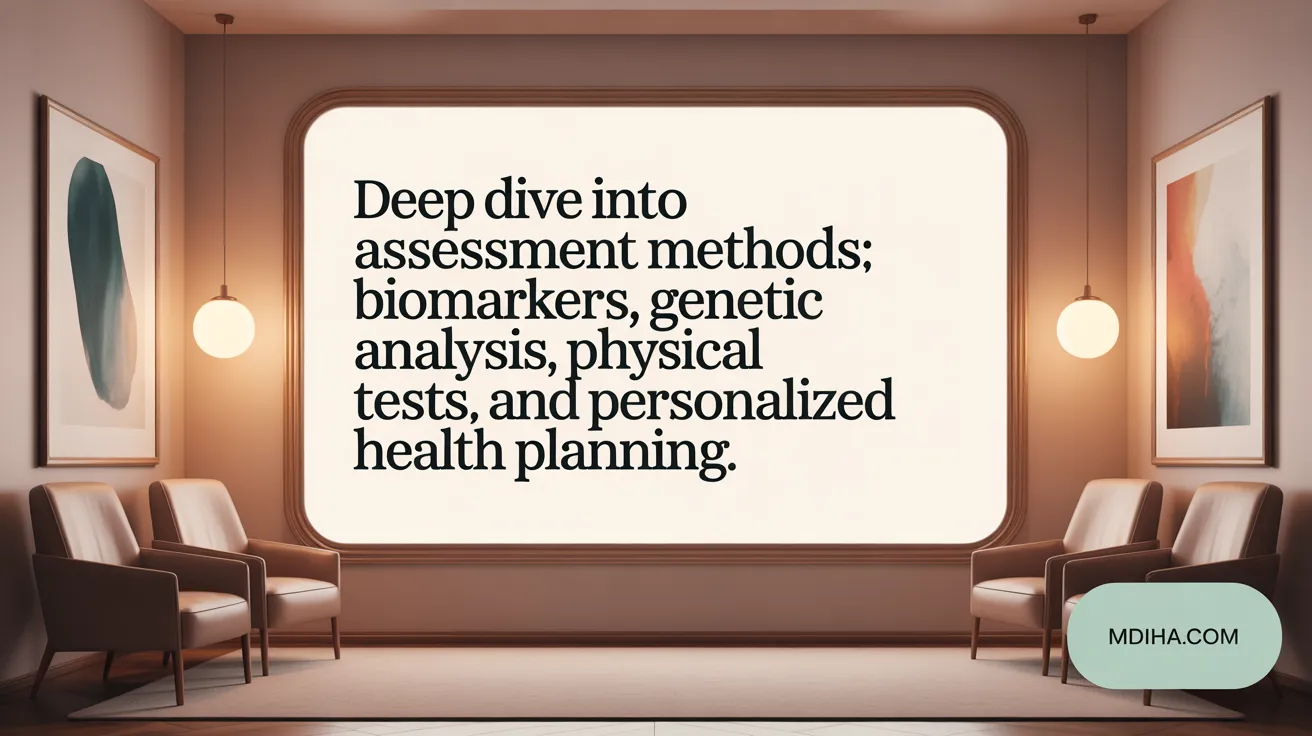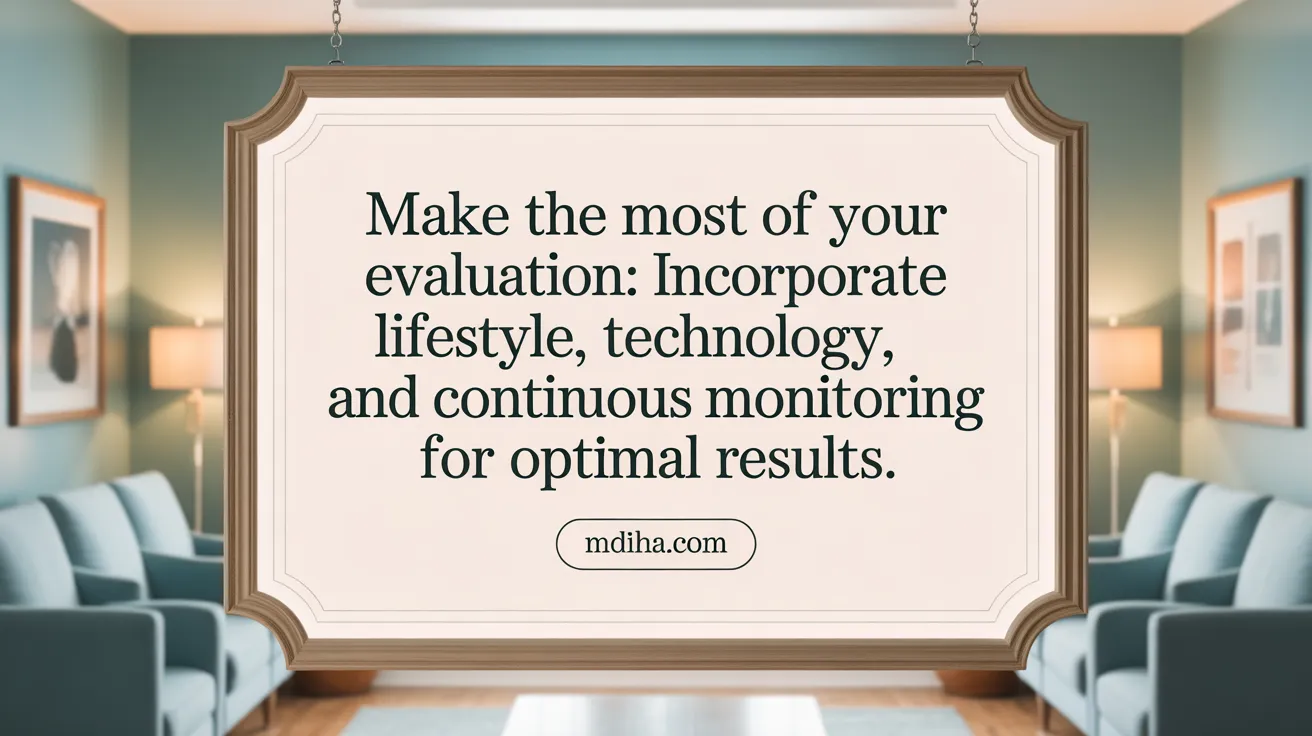Introducing Your First Longevity Checkup at MIHA
Embarking on a longevity assessment journey at MIHA offers a transformative opportunity to understand your biological age, uncover hidden health risks, and embrace a personalized pathway toward healthier aging. Preparing thoroughly enhances the value of this comprehensive evaluation, equipping you with the insights necessary to optimize healthspan and lifespan through tailored interventions and ongoing care.
Understanding the Purpose and Benefits of a Longevity Assessment

What is the purpose and benefit of a longevity assessment?
A longevity assessment is designed to explore an individual's biological age and overall health status by examining a wide range of health markers, genetic information, and lifestyle factors. Its main goal is to identify opportunities for extending lifespan and enhancing quality of life.
This comprehensive approach involves various tests, including blood analysis, DNA methylation studies, and physical assessments like DEXA scans and VO2 max tests. By combining these factors, individuals can gain detailed insights into their health risks associated with aging.
The benefits of such assessments are significant. They help craft personalized health strategies, including tailored diet plans, exercise routines, supplements, and preventive measures. In doing so, a longevity assessment allows proactive management of health, enabling early detection of potential issues and implementing targeted interventions.
Tracking biomarkers and habits over time provides a dynamic picture of health, encouraging ongoing adjustments to optimize longevity. Ultimately, the process supports preventive health practices and promotes aging well, aiming to extend healthspan—the period of life spent in good health—and maintain functional independence later in life.
This strategic approach to health not only highlights risks but also empowers individuals to make informed decisions for healthier aging, reducing the likelihood of chronic diseases and age-related decline.
How to Prepare for Your First Longevity Assessment at MIHA

What should I do before my first assessment?
Before your initial longevity assessment at MIHA, it’s beneficial to adopt a healthy lifestyle. This includes avoiding smoking, maintaining a balanced diet, and engaging in regular physical activity. Staying at a healthy weight and managing stress can also contribute to better health outcomes.
How can I organize my medical history?
Gather your medical records, including previous health evaluations, lab results, and details of ongoing treatments. Make a list of your current medications and supplements to provide the health team with comprehensive information about your health background.
Are there simple physical tests I can do?
Yes, incorporating basic physical activities can help establish a health baseline. Practice balance exercises like standing on one leg for 10-30 seconds daily, which can improve stability. Tests such as grip strength and walking speed are also useful indicators of physical resilience.
Why is documenting my health habits important?
Tracking your lifestyle habits and health goals enables you to participate actively in your health journey. It helps clinicians tailor assessments and recommendations to your specific needs, making the process more personalized and effective.
| Preparation Step | Examples | Why It Matters |
|---|---|---|
| Healthy lifestyle | No smoking, nutritious diet, exercise | Improves overall health and assessment accuracy |
| Organize medical info | Medical records, meds, supplements | Ensures comprehensive health overview |
| Physical baseline tests | Balance exercises, grip strength | Identifies mobility and strength status |
| Record health goals | Habits, sleep, stress levels | Guides personalized health planning |
Being proactive and organized can make your first longevity assessment at MIHA more insightful and beneficial, setting the stage for a tailored approach to optimizing your health and longevity.
What Happens During the Longevity Assessment Process at MIHA

At-home and in-clinic testing procedures
Participants at MIHA first sign up for a personalized health journey that includes various testing methods. The process begins with at-home blood and DNA tests designed to gather comprehensive health data. These at-home assessments are convenient and form the foundation for further detailed analysis.
In addition to remote testing, in-clinic assessments such as DEXA scans for body composition, VO2 max tests for cardiovascular fitness, and other physical evaluations are often performed. These in-person evaluations provide valuable insights into an individual’s physical condition and metabolic health.
Types of biomarker and DNA analyses involved
The testing regimen features advanced biomarker analysis to evaluate biological age, inflammation levels, lipid profiles, hormone status, and genetic factors. The initial Baseline Kit includes 73 biomarkers along with DNA methylation analysis, which estimates biological age and aging acceleration.
Other specialized kits delve into specific health areas, such as Cardiac for heart health, Metabolic for energy regulation, Hereditary for genetic risks, and Cognitive for brain health. These analyses help in creating a personalized health profile.
Initial orientation and coaching sessions
After assessments, participants engage in a personalized coaching session with health experts. This session reviews test results and discusses potential health risks and areas for improvement. The goal is to help individuals understand their unique health status and develop a tailored plan.
The program emphasizes preventive strategies, lifestyle modifications, and periodic re-evaluations to monitor progress over time.
Follow-up procedures and ongoing health tracking
Participants receive ongoing support through an app that tracks health metrics and progress over time. Every three months, updates include new testing kits, supporting continuous assessment and adjustments to wellness plans.
Follow-up coaching sessions help refine strategies to extend healthspan, prevent disease, and improve overall well-being. This personalized, evolving approach aims to optimize longevity and quality of life.
| Process Step | Description | Additional Details |
|---|---|---|
| Initial registration | Sign up for the program | Includes choosing kits and scheduling tests |
| At-home testing | Blood and DNA samples collected at home | Simple kits sent to participants |
| In-clinic assessments | Physical health tests | DEXA scans, VO2 max, physical exams |
| Results review | Personalized coaching | Interpreting data and planning |
| Follow-up tracking | Ongoing health management | App-based tracking and new assessments |
By combining remote and in-person testing, MIHA ensures a comprehensive understanding of each individual's health, supporting targeted strategies to effectively promote longevity.
Key Components and Evaluation Methods in Longevity Assessments
 A comprehensive longevity assessment includes a variety of components designed to analyze the biological age and health status of an individual. At the core, it involves evaluating biomarkers and physiological indicators that signal how well the body is aging. These assessments help pinpoint areas where intervention can prolong healthspan.
A comprehensive longevity assessment includes a variety of components designed to analyze the biological age and health status of an individual. At the core, it involves evaluating biomarkers and physiological indicators that signal how well the body is aging. These assessments help pinpoint areas where intervention can prolong healthspan.
One major aspect is genetic and epigenetic analysis. For example, DNA methylation clocks like Horvath and GrimAge are used to estimate biological age with high accuracy. These markers capture changes in methylation patterns associated with aging, providing insight into how far along someone is in the aging process.
Physical and cognitive function tests are also integral. These may include strength assessments, mobility tests, and cognitive evaluations to assess functional capacity and predict potential decline. Some assessments incorporate advanced diagnostic tools such as DEXA scans for body composition, VO2 max tests for cardiovascular fitness, and neurocognitive screenings.
To generate a personalized plan, the assessment process culminates in creating a Longevity Master Plan. This tailored strategy includes health, nutritional, and movement recommendations based on the individual's unique profile.
The combination of biomarkers, physical testing, and genetic analyses allows practitioners to track aging biomarkers like advanced glycation endproducts, hormone levels, and nutrient status. The insights gained support interventions aimed at reducing age-related risks.
| Evaluation Component | Measurement Focus | Techniques/Tools |
|---|---|---|
| Biomarkers and Physiological Indicators | Biological age, metabolic health, cellular health | Blood tests, DNA methylation analysis, hormone panels |
| Genetic and Epigenetic Analyses | Genetic risks, epigenetic age markers | Genomic sequencing, methylation clocks |
| Physical and Cognitive Tests | Functional capacity, motor skills, cognitive health | DEXA scans, VO2 max tests, neurocognitive assessments |
| Personalized Plans | Health optimization strategies, lifestyle modifications | Data analysis, visualization algorithms, coaching sessions |
By integrating these methods, longevity assessments aim to provide a detailed, actionable picture of health and aging. This enables a proactive approach to interventions, helping individuals extend not only lifespan but also quality of life.
Maximizing the Impact of Your Longevity Evaluation and Follow-Up Care

How can one maximize the usefulness of a longevity evaluation?
To get the most out of a longevity assessment, it's important to actively incorporate all available health data. This includes biomarkers, genetic information, and physiological measurements. Understanding individual risks allows for tailored interventions tailored to your unique profile.
Lifestyle modifications play a crucial role in enhancing healthspan. Maintaining a balanced, plant-based diet, engaging in at least 150 minutes of moderate activity weekly, avoiding smoking, limiting alcohol intake, and ensuring good sleep quality can all positively influence your longevity.
Using wearable health tracking devices helps provide continuous data, enabling early detection of potential issues. Regular monitoring facilitates timely adjustments to diet, activity, or medical treatments.
Mental health and social engagement are also vital. Managing stress effectively and nurturing social connections contribute to longer, healthier lives.
When these personalized strategies are combined with ongoing medical advice and staying updated on emerging therapies, you will maximize the benefits of your evaluation.
What guidance is typically provided on initial assessment procedures and follow-up actions in longevity assessments?
Initial assessments usually involve comprehensive testing, including blood tests, DNA analysis, and physical evaluations such as DEXA scans or VO2 max tests. Healthcare providers interpret these results to detect hidden health issues and determine individual risk factors.
Follow-up procedures include regular check-ins, additional testing, and ongoing monitoring to observe changes over time. Patients are often encouraged to adopt nutrition and lifestyle plans tailored to their specific health profile.
Digital health tools like AI dashboards, mobile apps, and personal coaching support ongoing health management. These tools help track progress, provide reminders, and suggest modifications based on real-time data.
Ensuring continuous engagement and proactive management through these measures significantly improves health outcomes and longevity prospects.
| Aspect | Details | Additional Notes |
|---|---|---|
| Initial assessment | Biomarkers, genetic testing, physical exams | Foundation for personalized plan |
| Follow-up actions | Regular testing, health monitoring | Adjustments in interventions |
| Technologies used | Wearables, AI dashboards, mobile apps | Support ongoing health tracking |
| Lifestyle focus | Diet, exercise, stress management | Essential for longevity |
| Support system | Coaches, digital tools, medical team | Ensures consistent care |
Preparing Today for a Healthier Tomorrow
Your first longevity assessment at MIHA marks a pivotal step toward proactive health management and extended vitality. By understanding the process, preparing thoughtfully, and engaging fully in follow-up care with personalized coaching, you empower yourself to unlock valuable insights that can transform how you age. Embrace this opportunity with commitment and curiosity, and you'll be well-equipped to navigate a healthier, more vibrant future.
References
- Changes in wood durability due to leaching of biologically active ...
- Longevity Testing Program by MyHealthspan
- Biomarkers of Aging for the Identification and Evaluation of ...
- The biological age model for evaluating the degree of aging in ...
- A Framework for an Effective Healthy Longevity Clinic - PMC
- Longevity Assessment Milan - IMAGE Regenerative Clinic
- Longevity Testing - What should you test and why? - NOVI Health
